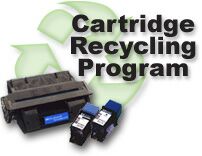The Twelve Green Chemistry Principles
These principles have been outlined by Dr. Paul Anastas et al. Dr. Anastas is credited with coining the term "green chemistry" and is internationally recognized as a leader in the field of green chemistry. He is currently an Assistant Director of the Environment for the Science Division of White House Office of Science and Technology Policy and was recently named the Director of the ACS Green Chemistry Institute.
It is better to prevent waste than to treat or clean up waste after it is formed.
Synthetic methods should be designed to maximize the incorporation of all materials used in the process into the final product.
Wherever practicable, synthetic methodologies should be designed to use and generate substances that possess little or no toxicity to human health and the environment.
Chemical products should be designed to preserve efficiency of function while reducing toxicity.
The use of auxiliary substances (e.g. solvents, separation agents, etc) should be made unnecessary wherever possible and, innocuous when used.
Energy requirements should be recognized for their environmental and economic impacts and should be minimized. Synthetic methods should be conducted at ambient temperature and pressure.
A raw material of feedstock should be renewable rather depleting wherever technically and economically practicable.
Unnecessary derivatisation (blocking group, protection/deprotection, temporary modification of physical/chemical processes) should be avoided whenever possible.
Catalytic reagents (as selective as possible) are superior to stoichiometric reagents.
Chemical products should be designed so that at the end of their function they do not persist in the environment and break down into innocuous degradation products.
Analytical methodologies need to be further developed to allow for real-time, in-process monitoring and control prior to the formation of hazardous substances.
Substances and the form of a substance used in a chemical process should be chosen so as to minimize the potential for chemical accidents, including releases, explosions and fires.
Links
Two and a half ounces of oil are used for every inkjet cartridge produced.
Three and a half quarts of oil are used for every laser cartridge produced.
Half a gallon of oil is conserved for every laser cartridge returned. With the United States consuming approximately 700 million gallons of oil a day, we are helping to conserve a valuable natural resource. Remember – oil is a non-renewable fossil fuel, and it can not be remade.
Every year over 300 million cartridges are thrown away. In terms of weight, that is equivalent to over 30,500 African Elephants!
Stacked end to end, cartridges thrown away in one year would cover a distance of over 24,000 miles-enough to circle the earth.
In the next seven years, if all of the laser and inkjet cartridges are saved from landfills, a bridge can be built from the Earth to the Moon- 223,000 miles!

FAQ Links Activities Members Scholarship